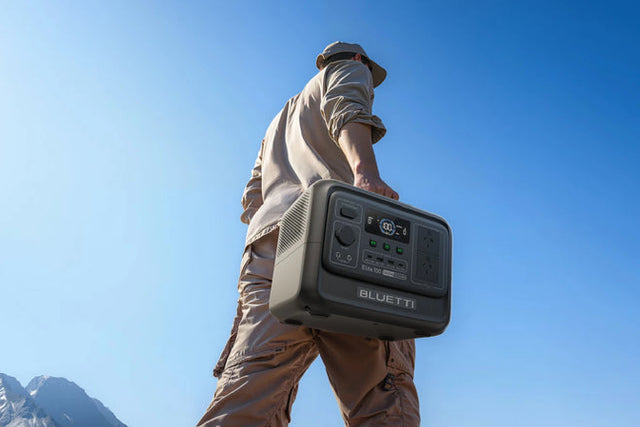Electricity is an essential aspect of modern life, powering everything from our homes to our workplaces. As the demand for electricity continues to rise, it's important to understand just how much energy we are consuming on a daily basis. In Australia, the average household electricity usage per day is a vital figure that provides insight into the nation's overall energy consumption and the impact it has on the environment. In this article, we will delve into the data to uncover the average household electricity usage per day in Australia and explore ways to reduce our energy consumption for a more sustainable future.
The Average Household Electricity Usage Per Day In Australia
In Australia, the average household electricity usage per day varies depending on various factors such as household size, location, and lifestyle. On average, a household in Australia consumes approximately 19-22 kWh of electricity per day. This is equivalent to 6,980 kWh per year, which amounts to an average annual electricity bill of $1,848. These numbers are based on a household with four members living in a metropolitan area.
| State | Supplier | Usage (kWh) |
|---|---|---|
| New South Wales | EnergyAustralia | 18.5 |
| New South Wales | AGL | 19.2 |
| New South Wales | Origin Energy | 17.8 |
| New South Wales | Red Energy | 18.0 |
| New South Wales | Alinta Energy | 17.5 |
| Victoria | EnergyAustralia | 16.8 |
| Victoria | AGL | 17.4 |
| Victoria | Origin Energy | 16.2 |
| Victoria | Red Energy | 16.6 |
| Victoria | Alinta Energy | 16.0 |
| Queensland | EnergyAustralia | 20.2 |
| Queensland | AGL | 21.0 |
| Queensland | Origin Energy | 19.5 |
| Queensland | Red Energy | 20.0 |
| Queensland | Alinta Energy | 19.0 |
| South Australia | EnergyAustralia | 15.5 |
| South Australia | AGL | 16.0 |
| South Australia | Origin Energy | 15.2 |
| South Australia | Red Energy | 15.8 |
| South Australia | Alinta Energy | 15.0 |

How does electricity usage vary by appliance type?
When it comes to household electricity usage in Australia, the amount of energy consumed can vary greatly depending on the type of appliance being used. This is due to the fact that different appliances have different levels of energy efficiency and require varying amounts of electricity to function. In this section, we will explore how electricity usage varies by appliance type and how it impacts the average household electricity usage per day in Australia.
| Appliance | Power Consumption (W) | Daily Usage (hrs) | Daily Consumption (kWh) |
|---|---|---|---|
| Refrigerator | 150 | 24 | 3.6 |
| Washing Machine | 500 | 1 | 0.5 |
| Dishwasher | 1200 | 1.5 | 1.8 |
| Air Conditioner | 2500 | 4 | 10.0 |
| Television | 200 | 5 | 1.0 |
| Microwave | 1000 | 0.5 | 0.5 |
| Toaster | 1200 | 0.1 | 0.12 |
| Oven | 3000 | 1 | 3.0 |
| Electric Kettle | 1500 | 0.2 | 0.3 |
| Clothes Dryer | 2500 | 1.5 | 3.75 |
| Computer | 400 | 6 | 2.4 |
| Printer | 300 | 0.5 | 0.15 |
| Ceiling Fan | 75 | 8 | 0.6 |
| Light Bulbs | 10 | 10 | 1.0 |
| Electric Heater | 2000 | 3 | 6.0 |
| Hair Dryer | 1800 | 0.1 | 0.18 |
| Electric Stove | 2000 | 1 | 2.0 |
| Electric Blanket | 150 | 8 | 1.2 |
| Vacuum Cleaner | 1000 | 0.5 | 0.5 |
| Water Pump | 750 | 1 | 0.75 |
| Doorbell Camera | 5 | 24 | 0.12 |
Refrigerators and Freezers: These appliances are essential in every household, keeping our food fresh and safe to eat. However, they also consume a significant amount of electricity. On average, a refrigerator consumes around 300-500 watts per hour, making it one of the top energy-consuming appliances in a household. This means that a refrigerator can account for up to 15% of a household's electricity bill.
Air Conditioners: With the harsh and unpredictable weather in Australia, it's no surprise that air conditioners are a popular appliance in households. However, they can also be a major contributor to electricity usage. A small window unit air conditioner can consume around 500-600 watts per hour, while a large central air conditioning unit can consume up to 3,500 watts per hour. This means that using air conditioners can significantly increase the average household's electricity usage per day.
Washing Machines and Dryers: Laundry is another household chore that requires a significant amount of electricity. On average, a washing machine can consume around 400-1,200 watts per hour, depending on the load size and temperature setting. Dryers, on the other hand, can consume anywhere from 1,800 to 5,000 watts per hour, depending on the size and type of dryer. This means that washing machines and dryers combined can account for up to 13% of a household's electricity usage per day.
Television: In today's modern world, it's rare to find a household without a TV. While they may not consume as much electricity as other appliances, they are still a significant contributor to household electricity usage. On average, a TV can consume around 80-400 watts per hour, depending on the size and type. This means that watching TV can account for up to 7% of a household's electricity usage per day.
Lights: While it may seem like a small contributor, lighting can still have a significant impact on a household's electricity usage. Traditional incandescent bulbs consume a lot of energy, around 60 watts per hour. However, with the rise of energy-efficient LED bulbs, households can reduce their lighting energy consumption by up to 75%. This means that switching to LED bulbs can significantly reduce a household's overall electricity usage per day.
Kitchen Appliances: In addition to refrigerators and freezers, other kitchen appliances such as ovens, microwaves, and toasters can also consume a considerable amount of electricity. On average, an electric oven can consume around 2,000-5,000 watts per hour, while a microwave can consume 1,000-2,000 watts per hour. Toaster and kettles, on the other hand, consume around 1,000 watts per hour. These kitchen appliances combined can account for up to 10% of a household's electricity usage per day.
The average household electricity usage per day in Australia can vary greatly depending on the type of appliances being used. Refrigerators, air conditioners, washing machines, and dryers are among the top energy-consuming appliances in a household, while lighting and kitchen appliances also contribute to the overall electricity usage. It is essential for households to be mindful of their energy usage and to invest in energy-efficient appliances to reduce their electricity consumption and save on their utility bills.

Common Strategies to Reduce Daily Electricity Consumption
In Australia, the average household electricity usage per day is approximately 16-18 kilowatt hours (kWh). However, this number can vary depending on various factors such as the size of the household, the type of appliances used, and the energy efficiency of these appliances. With rising electricity costs and the increasing impact of energy consumption on the environment, it has become crucial for households to reduce their daily electricity usage. Fortunately, there are several strategies that can help households in Australia reduce their electricity consumption on a daily basis.
1. Switch to Energy-Efficient Appliances:One of the most effective ways to reduce daily electricity usage is by switching to energy-efficient appliances. The Australian government has implemented a star rating system that helps consumers identify the energy efficiency of various appliances. By choosing appliances with a higher star rating, households can significantly reduce their energy consumption, leading to lower electricity bills.
2. Unplug Appliances When Not in Use:Many electronic devices and appliances continue to draw power even when they are turned off. This is known as phantom energy or standby power, and it can account for up to 10% of a household's electricity usage. Therefore, it is important to unplug appliances when they are not in use or use power strips to easily switch off multiple devices at once.
3. Install Solar Panels:Solar panels are becoming increasingly popular in Australia as a way to reduce electricity usage and save money on bills. By harnessing the power of the sun, households can generate their own electricity and reduce their reliance on the grid. This can significantly lower daily electricity usage and also help in reducing carbon emissions.
4. Practice Energy-Efficient Habits:Small changes in daily habits can also contribute to reducing electricity consumption. For example, turning off lights and fans when not in use, using natural light during the day instead of artificial lighting, and washing clothes in cold water instead of hot can all make a difference in reducing daily electricity usage.
5. Utilize Smart Technology:The advancement of technology has made it possible for households to track and manage their electricity consumption. Smart thermostats, energy monitoring systems, and smart plugs are some examples of technology that can help in reducing daily electricity usage. These devices can provide real-time data on energy consumption and allow users to remotely control their appliances, leading to more efficient energy usage.
6. Invest in Insulation and Weatherproofing:Proper insulation and weatherproofing can help in keeping homes cooler in summer and warmer in winter without relying heavily on heating and cooling appliances. This can lead to significant energy savings and reduce daily electricity usage. Simple measures like sealing cracks and gaps, installing draft excluders, and using curtains or blinds can make a significant difference.
Reducing daily electricity usage not only benefits households by lowering their electricity bills, but it also has a positive impact on the environment. The strategies mentioned above are just a few ways in which households in Australia can reduce their electricity consumption and contribute towards a more sustainable future.
Average Household Electricity Usage Per Day In Australia
Australia is one of the top consumers of electricity in the world, with an average household using approximately 19 kWh per day. This amount can vary depending on a number of factors such as the size of the household, location, and lifestyle choices. To better understand the typical electricity usage in Australian households, let's take a look at the usage of various household appliances:
| Appliance | Average Daily Usage (kWh) | Notes on Usage Patterns |
|---|---|---|
| Refrigerator | 1-2 kWh | The refrigerator is always running, but the usage can vary depending on the age, size, and energy efficiency of the appliance. |
| Oven | 2-3 kWh | The oven is typically used for shorter periods of time, but can use a significant amount of electricity when in use. |
| Washing Machine | 1-2 kWh | Washing machines use more electricity for heating the water, but the amount can vary depending on the size and energy efficiency of the appliance. |
| Dryer | 2-4 kWh | Dryers use a lot of electricity for heating and drying clothes, and the usage can vary depending on the size and energy efficiency of the appliance. |
| Television | 0.1-0.5 kWh | The usage of televisions can vary depending on the size and type (LCD, LED, plasma) of the appliance. |
| Air Conditioner | 2-10 kWh | The usage of air conditioners can vary greatly depending on the size, type, and usage patterns of the appliance, as well as the climate of the location. |
| Lighting | 1-2 kWh | The usage of lighting can vary depending on the number and type of light bulbs used, as well as the hours of usage. |

1. How does the average household electricity usage in Australia compare to other developed countries?
In order to fully understand the significance of the average household electricity usage in Australia, it is important to compare it to that of other developed countries. According to a report by the International Energy Agency, the average electricity consumption per capita in Australia was 10,402 kilowatt-hours (kWh) in 2018. This puts Australia in the top 20 countries for electricity consumption per capita, alongside other developed nations such as the United States, Canada, and Finland.
However, when looking at average household electricity usage, Australia falls behind some other developed countries. The average household electricity usage in Australia was approximately 19.2 kWh per day in 2019, according to the Australian Bureau of Statistics. This is significantly lower than countries like Norway, where households use an average of 25.5 kWh per day, and the United States, where the average is 30.6 kWh per day.
One reason for this discrepancy could be the difference in housing and climate between countries. Australia has a warmer climate compared to many other developed countries, leading to a lower demand for heating and cooling, which are major contributors to household electricity usage. Additionally, the size and age of homes in Australia may also play a role in the average household electricity usage, as newer homes tend to have higher energy efficiency standards.
2. What factors contribute to variations in household electricity usage within different regions of Australia?
There are several factors that contribute to variations in household electricity usage within different regions of Australia. One major factor is climate. Regions with hotter climates tend to have higher electricity usage due to the increased need for air conditioning. This is particularly evident in the northern regions of Australia, such as Queensland and the Northern Territory. Another factor is the size and type of household. Larger households with more members are likely to have higher electricity usage compared to smaller households. Additionally, the type of appliances and energy-efficient practices also play a role. For instance, households that use energy-efficient appliances and practices tend to have lower electricity usage compared to those that do not. Lastly, the socioeconomic status and lifestyle of households can also contribute to variations in electricity usage within different regions of Australia. Households with higher incomes and more access to technology tend to have higher electricity usage compared to those with lower incomes and less access.
3. Has the average household electricity usage in Australia changed over the past decade and if so, what are the reasons behind this change?
The average household electricity usage in Australia has indeed changed significantly over the past decade. According to data from the Australian Bureau of Statistics, the average household electricity usage in 2019 was 10,416 kilowatt hours (kWh) per year, which translates to an average of 28.5 kWh per day. This is a 9.4% decrease from the average usage in 2009, which was 11,492 kWh per year or 31.5 kWh per day.
The average household electricity usage per day in Australia varies depending on various factors such as the size of the household, energy efficiency measures, and individual energy consumption habits. However, on average, a household in Australia consumes approximately 16-18 kilowatt-hours (kWh) of electricity per day. This translates to an average annual electricity usage of around 5,800 kWh per household. With the rising cost of electricity and the increasing need for sustainable energy consumption, it is important for households to be mindful of their electricity usage and adopt energy-efficient measures to not only reduce their electricity bills but also contribute to a greener environment.












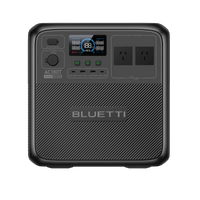












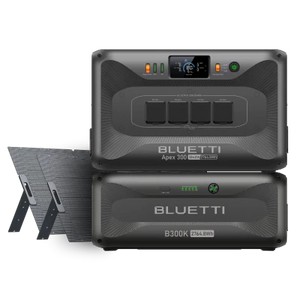











































![[Phased Out] BLUETTI B80P Expansion Battery | 806Wh](http://www.bluettipower.com.au/cdn/shop/files/202310025B80P_2000-2000px_4_4caa0c1c-4dab-4272-9e9b-2b7507e5bd81.jpg?v=1713777870&width=200)
![[Phased Out] BLUETTI B210P Expansion Battery | 2,150Wh](http://www.bluettipower.com.au/cdn/shop/files/2_08cf9ef3-03a4-4489-b641-d3edb8094896.webp?v=1716016566&width=200)
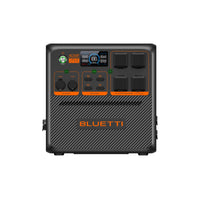


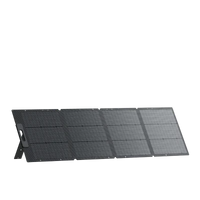


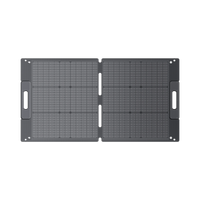




























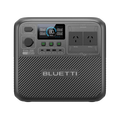
































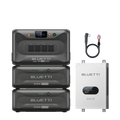













































![[Phased Out] BLUETTI B80P Expansion Battery | 806Wh](http://www.bluettipower.com.au/cdn/shop/files/202310025B80P_2000-2000px_4_4caa0c1c-4dab-4272-9e9b-2b7507e5bd81.jpg?v=1713777870&width=120)
![[Phased Out] BLUETTI B210P Expansion Battery | 2,150Wh](http://www.bluettipower.com.au/cdn/shop/files/2_08cf9ef3-03a4-4489-b641-d3edb8094896.webp?v=1716016566&width=120)

































